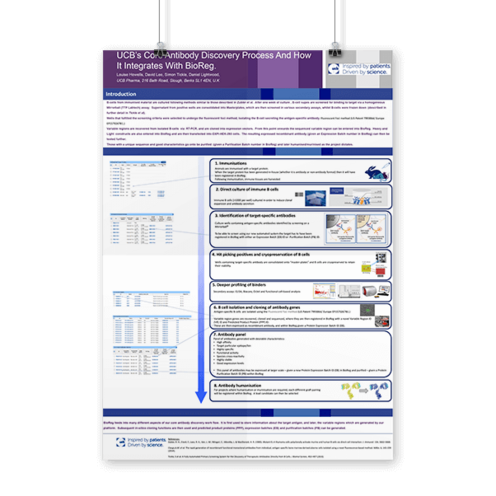UCB’s Core Antibody Discovery Process and How It Integrates with Genedata Biologics
PEGS Boston, Boston, MA, USA
April 8, 2019
B-cells from immunised material are cultured following methods similar to those described in Zubler et al. After one week of culture , B-cell supes are screened for binding to target via a homogeneous Mirrorball (TTP Labtech) assay. Supernatant from positive wells are consolidated into Masterplates, which are then screened in various secondary assays, whilst B-cells were frozen down (described in further detail in Tickle et al). Wells that fulfilled the screening criteria were selected to undergo the fluorescent foci method, isolating the B-cell secreting the antigen-specific antibody. Fluorescent Foci method (US Patent 7993864/ Europe EP1570267B1.) Variable regions are recovered from isolated B-cells via RT-PCR, and are cloned into expression vectors. From this point onwards the sequenced variable region can be entered into BioReg. Heavy and Light constructs are also entered into BioReg and are then transfected into EXPI-HEK-293 cells. The resulting expressed recombinant antibody (given an Expression Batch number in BioReg) can then be tested further. Those with a unique sequence and good characteristics go onto be purified (given a Purification Batch number in BioReg) and later humanised/murinised as the project dictates.
